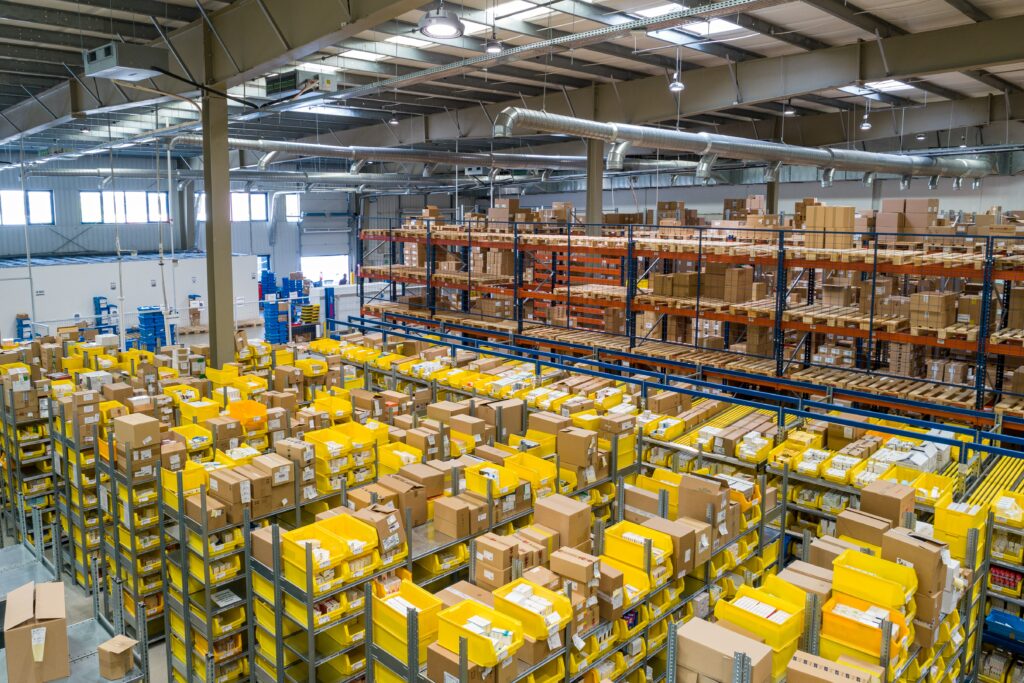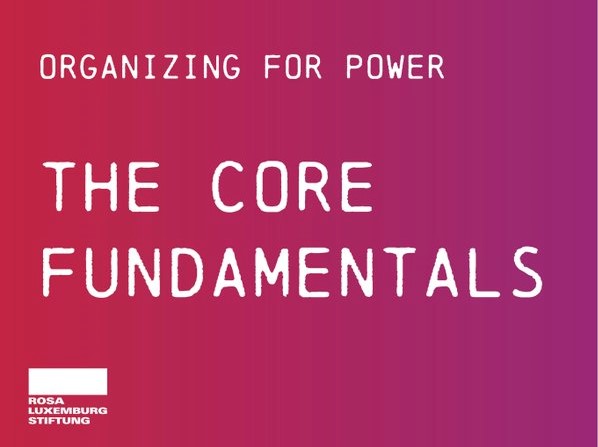Share Twitter Facebook Email Copy URL
How organizers and activists are seeking to turn the tide at the e-commerce giant
This article was first published in German on Zeitschrift Luxemburg
The victory for the Amazon Labour Union (ALU) in the union election at the JFK 8 fulfilment centre in New York represents a major success for the labour union movement within Amazon’s global network. For the first time, workers in Amazon’s most important market, the United States, have the legally guaranteed right to negotiate working conditions with management.
What has been forgotten amidst the media coverage of their success, however, is that the ALU’s efforts were not the first— or even first successful— attempt by workers to unionize at Amazon in the US. Other unions – which, it ought to be said, are not recognized unions according to US law because they do not stand in labour union elections for strategic reasons – have recently been able to push through improvements and reforms for workers at several locations.
This article provides an overview of the different union strategies in the US, while drawing attention to problems with particular strategies. In addition to the Retail, Wholesale and Department Store Union (RWDSU) and the Teamsters, the focus here is primarily on the ALU and the practices of the Amazonians United (AU) cross-site group network, with whom I have been in dialogue for some time through my involvement with Amazon Workers International.[1] For this article, I spoke at length with the AU organizer Ira.
This article seeks to contribute to the discussion on labour union strategies at Amazon. While conditions may differ between individual countries, they do have things in common, meaning that there is space for them to learn from each another’s successes and failures.
Power and Counter-Power in a Multinational Corporation
Before delving into the strategies of the ALU and AU, a more general look at the conditions of struggle under which Amazon workers deploy various strategies is useful. Inspired by the Jena power resources approach, I focus on five points in this analysis:
- As of the end of 2021, Amazon had 253 fulfilment centres (FC) and 467 delivery stations (DS) in the US— while the corporation’s logistics network continues to grow. Strikes and other industrial actions at individual nodes in the network do little harm to the company. If, for example, a strike takes place at the fulfilment centre in Leipzig, Germany, then goods are shifted between locations and customers are supplied from other large warehouses— either non-unionized locations within Germany or fulfilment centres in Poland, where there are more restrictions on the right to strike. Occasional strikes will not force Amazon to break its promise of timely deliveries to customers. Nevertheless, the company has restructured its supply chains in recent years. In addition to its large fulfilment centres, Amazon is also establishing delivery stations. At these nodes in the network, packages converge with goods from the fulfilment centres and are then distributed within a specific district by the drivers of Amazon’s own fleet of vans, while the drivers themselves are employed by subcontractors. Strikes at the delivery stations can bring local deliveries to a standstill, and in doing so impact Amazon (as described below using the example of the AU).
- Unions around the world are struggling to organize majority support among workforces at Amazon locations. This is also linked to the role the warehouses play in local labour markets. Both in poorer regions such as Bessemer, Alabama or Leipzig, as well as in wealthier regions like New York or Hamburg, Amazon offers relatively well-paid jobs to those segments of the working class whose professional qualifications have not led them to employment or who have no job training whatsoever. Many workers also see Amazon as merely a short-term employer, as is reflected in the relatively high turnover rate among the workforce, which makes it difficult to establish longer-term structures. That said, this enormous turnover depends on the local labour market. Due to their position within labour markets, a large number of migrants and refugees work for Amazon.
- Amazon is openly anti-union. In the US, the company has invested millions in union busting efforts and campaigns encouraging workers to vote “no” in union elections. Company propaganda portrays unions as superfluous, external third parties interfering in the internal affairs of the Amazon family. Multiple union organizers have also been fired, both in the US and in Europe. In Europe, Amazon has only entered into negotiations with unions where it was legally obliged to do so.
- The labour union movement at Amazon has strong support from all corners of society. Environmental activists have blocked access for trucks. Journalists regularly report on the company in a negative light. Politicians, such as US President Joe Biden, denounce the company or support labour union efforts. In Germany, Die Linke and the Rosa Luxemburg Foundation seek to actively support employees. While this social support may be important— because it legitimizes the employees’ struggles and can in turn form the starting point for broader alliances— its impact can never compare to actions taken by the actual workers at the company.
- Amazon’s dominance of the North American and European e-commerce markets remains unbroken. The company earned particularly large profits (33.4 billion US dollars in 2021) during the COVID-19 pandemic. As a result, there is space for wage increases for workers even exceeding the rate of inflation. However, there are indications that this pandemic-driven growth is reaching an end. Amazon again incurred losses in the first quarter of 2022, with weak online trade also playing a part. It remains unclear whether the infrastructures that have expanded enormously during the pandemic can continue to operate profitably should the number of online orders decrease again.
“While He Was Up There, We Were Organizing a Union”
Chris Smalls’s statement following the successful union election on 1 April 2022 was aimed at Amazon founder Jeff Bezos’s ambitions to reach outer space. The former Amazon supervisor Smalls was once fired after daring to protest against COVID-19 safety conditions. Today, he is the charismatic chairperson of the ALU. He wants to use his position to emphasize what made the ALU’s victory possible: organizing within the workplace.
The ALU began organizing workers at the JFK 8 fulfilment centre in Staten Island, New York in April 2021. A team of 15 organizers worked tirelessly to organize the workforce. They toiled during breaks as well as before and after the end of their shifts— either in the parking lot, where Smalls was present every day after his dismissal to serve as a mobile union office, or at the bus stop. Canvassing for unions during working hours is prohibited in the US.
The organizing committee reflected the workforce’s wide ethnic diversity. This made it possible, for example, for workers to be addressed in their mother tongues and for the committee to respond to the particular needs of individual groups. It was here that Brima Sylla, a 55-year-old organizer with movement experience and a skill for languages, could really shine. He talks about organizing in migrant communities:
The team also included “salts”, left-wing activists who get jobs at companies for the express purpose of helping with organizing efforts. Left-wing activist and Amazon worker Justine Medina had the following to say about her role:
In the context of the ALU campaign, the salts joined an existing union structure at the grassroots level in order to support it, meaning the campaign was not sustained by salts alone. ALU organizers see the fact that the ALU is led by workers from the company and is independent of the big unions as the guarantee of their success is. This factor gave the union an air of authenticity vis-à-vis the workforce. As a result, Amazon was not very successful in portraying the union as a third party in its propaganda. As ALU organizer Angelika Maldanado explains:
The union also made overtures to workers outside of the workplace. It organized culinary events such as picnics and barbecues— which also served as places to get talking to co-workers— as well as support services for workers facing financial difficulties. Smalls reported that they helped co-workers with cable charges or mobile phone bills. Nevertheless, it was important to the union that they did not turn up at workers’ doors unannounced and that organizing was limited to the local company. Workers were to be left alone in their private lives.
The Defeat in Alabama and the Pitfalls of a Union Election
ALU founders Chris Smalls and Derrick Palmer distance themselves from the strategy employed by the RWDSU in Bessemer, Alabama, where the union lost an election for the second time in April 2022. The RWDSU surprisingly lost the first election by a clear margin in April 2021, following a campaign that attracted international attention and despite massive support from prominent figures. Due to irregular practices during the vote on the part of Amazon, a re-vote took place in March 2022. The RWDSU has again lodged an appeal against this latest defeat, the outcome of which is still unclear. Deputy ALU chairman Palmer has been critical in his assessment:
Palmer stresses how important it is for a union to have its finger firmly on the pulse of the workforce’s concerns if it wants to succeed at Amazon. However, this requires that the organizing team be firmly rooted in that workforce. Labour organizer Jane McAlevey puts forward a similar criticism. She accuses the RWDSU of relying too much on both public opinion being firmly against Amazon and the work of its own full-time employees in its campaign, while failing to set up an organizing committee supported and sustained by the employees themselves that would have been capable of doing the organizing itself.
But even in the case of JFK 8, where the ALU won the election, it’s unclear whether Amazon will sit down at the negotiating table with a union any time soon. It doesn’t look that way at the moment. The company wants to challenge the result of the vote. Among other things, the ALU is accused of having distributed marijuana to workers as part of the campaign. According to journalist Rani Molla, as much as 30 percent of companies in the US will still not have reached a collective agreement between the management team and the respective union three years after a positive union election.
A combative attitude towards the union could make strategic sense for Amazon, as the union movement can lose momentum during the drawn-out and draining process. As time drags on, workers may lose the hope they placed in the union. At Amazon, it can also be assumed that the workforce will change significantly within the space of a few months due to the company’s high turnover rate, and the new employees will have to be mobilized to take part in the struggle. This is one of the reasons why the corporation is playing for time.
In its struggle to be recognized as a union, the ALU is looking more to the public. It wants to ratchet up public pressure on Amazon. The ALU has already organized a demonstration that took place on 24 May and was attended by Bernie Sanders and Alexandria Ocasio-Cortez.
The Cavalry Arrives
“The big unions are going to support us, and that’s all we’re asking for … The cavalry has come.” These were the words of Chris Smalls after a meeting with Sean O’Brien, chairman of the International Brotherhood of Teamsters since March 2022, concerning the latter’s promise to support the ALU with resources such as lawyers in future disputes.
On this note, Smalls was sure to stress that the ALU will remain independent. The Teamsters, who like the RWDSU are an established union in the US, announced that they want to turn their attention towards Amazon across the board. In an interview with the Guardian, O’Brien argued that the Teamsters enjoy the best conditions of all unions in the US— not only in financial terms, but also because the Teamsters have already succeeded in enforcing collective agreements with UPS and DHL in the US.
Amazon drivers are expressly included in his vision — also because they earn significantly less than their colleagues at UPS. In the course of this process, the established union wants to rely not just on community organizing and public support (like the RWDSU did), both of which played a subordinate role within the ALU. Instead, they have announced that workers will be organizing within the company. In this respect, O’Brien seems to have been inspired by the ALU.
An initial Teamsters campaign for a union election in Canada failed in autumn 2021 after the union failed to collect enough signatures. Ashlynn Chand, who worked and conducted ethnographic observations during the union campaign at YEG1 in Nisku, Alberta, recounts how the union’s absence from the warehouse meant that, despite great dissatisfaction among the workforce and (in some cases) sympathy expressed for the union, management had an easy job of preventing a win. Time will tell whether the Teamsters are able to learn from this experience.

Building Strike Capacity
In an article for Wildcat, an AU activist from Chicago articulated the union’s criticism of a strategy aimed at organizing union elections:
“We have not fallen into the trap of seeking an ‘official’ secret union election and trying to solve our problems through collective bargaining, as the RWDSU tried to do in Alabama. We all saw how that turned out. To engage in a union election and collective bargaining is to enter the terrain of Amazon and its anti-union consultants. Why should we fight on ‘official’ terrain where Amazon and its lawyers and consultants are strong? We fight where we are strong: in the workplace, together with our colleagues, directly against our bosses. From there, our union grows.”
The AU doesn’t seek to establish operational institutions within the structures of US law. The union does not see itself as on an equal footing with Amazon on this “terrain”. Instead, the union seeks to build power over Amazon directly at the workplace.
In the US, contracts between management and trade unions, which often have terms lasting years, explicitly limit action at the grassroots level. The union can then no longer resort to means such as petitions, i.e., collecting signatures, or walk-outs and spontaneous strikes, and thus becomes dependent on management’s willingness to negotiate. Such actions are protected under US labour law in the private sector when they specifically relate to workplace demands (except in agriculture, the railways, and at airports). Nevertheless, militancy in the workplace is central to the AU’s strategy. Under no circumstances does it want to give up the capacity to act at the workplace, even temporarily, as a result of contracts concluded with management.
A number of signature drives and walk-outs have taken place on multiple occasions over the last few years, in particular at the delivery stations in Chicago and New York, which is where the focus of AU organizing efforts lies. In order to represent the interests of delivery station workers, the colleagues usually proceed as follows: first, they identify problems at the workplaces, before starting a petition around those problems and submitting it to management.
An incisive example is found in the context of the delivery station collapse in Edwardsville, Illinois on 10 December 2021, when six workers died after a tornado destroyed the warehouse. The workers hadn’t been properly informed about the dangerous weather situation and could not find out any information for themselves due to the ban on mobile phones in place at the warehouse. Amazon itself left the employees to keep working. In the wake of the catastrophe, workers at six New York delivery stations demanded they be allowed to bring phones to work. Amazon ultimately reversed the ban.
In other cases, workers have staged walkouts to back up their demands after petitions were ignored. In December, for example, workers in Chicago demanded a wage increase, prompting Amazon to raise wages shortly thereafter. However, wages were not increased in New York, where walkouts also took place in March 2022, which Ira attributes to Amazon’s desire to prevent other workforces from following Chicago’s example.
In relation to New York, she describes in detail why the delivery stations play such an important role for the AU:
The AU’s idea is therefore that, at the delivery stations, relatively few employees have much more power to exert pressure on management than they would, for example, in the much larger fulfilment centres such as JFK 8. The former can also be organized more quickly than the latter thanks to the small size of the workforce. In JFK 8, 2,654 out of a total of 8,000 workers voted in favour of forming a labour union. Assuming that all “yes” voters participate in the strike, it is questionable whether 33 percent of the workforce can actually strike effectively, i.e., to the extent that co-workers in surrounding fulfilment centres cannot simply make up the lost output .
The AU isn’t the only union that has organized walk-outs at Amazon in the US. Since 2018, several have also taken place at the MSP1 fulfilment center in Minneapolis. In the past, the strike movement demanded job security, including during the COVID-19 pandemic. At the most recent walkouts on 1 May 2022, the main demand was that Amazon reverse its withdrawal of the 3-dollars-per-hour COVID bonus and that workers be allowed to take time off for the Muslim holiday Eid.
The movement was initiated by workers from the Somali, Sudanese, and Eritrean community, who are overwhelmingly Muslim. Backing the movement is the Awood Center, a neighbourhood centre for people from the community. While supported in its work by established unions such as the SEIU and the Teamsters, the MSP1 site group is not seeking to organize a union election.
Amazon Union Successes from a Global Perspective
The ALU’s victory at JFK 8 represents the most successful attempt by US unions to confront Amazon at the level of formal industrial relations to date. Never before has the hurdle of winning a union election been overcome.
Fundamentally speaking, it remains unclear whether US labour law can be an effective tool for workers to improve their working conditions at an anti-union company such as Amazon. Amazon will attempt to drag out the process. In any case, union members will need a lot of patience if they are to hold out before a contract is signed.
Evidence of this can be seen in Germany, where employees organized in the labour union Ver.di have been trying to force Amazon into the retail sector’s collective bargaining agreement for nine years. That said, the German example also shows that long periods of time do not necessarily have to be a death knell for a strike movement. Through regular strikes, Ver.di has managed to keep winning new members at several locations and keep membership figures stable despite high employee turnover. The regular mobilizations of both the AU and the workers at the MSP1 fulfilment centre will also help to keep a militant dynamic going.
Whether the ALU can push through its demands for 30 dollars per hour or better health insurance will depend not only on its lawyers’ negotiating skills, but also on the strike power that the union can build up to reinforce its demands. In order for strikes at Amazon to be successful, as many segments of the network as possible must go on strike at the same time: that means workers in all types of warehouses, both fulfilment centres and delivery stations. This requires extensive organizing efforts throughout the network.
On the one hand, in the US (ALU and AU) as well as in Poland, the examples of the Polish union Workers’ Initiative in Poznan or the Solidaires at Amazon in France show that worker-led unions can achieve considerable organizing successes. On the other hand, the successes of the ALU (and the Awood Center) show how to overcome ethnic divisions during the organizing campaign and how to effectively integrate salts into a broader union campaign.
In order to win against Amazon, unions must establish structures at all nodes of the global Amazon network. Against the backdrop of a possible crisis for the corporation, whose pandemic-led growth has stalled for the time being, workers will have a lot to do at the individual network nodes if they want to build up counter-power. In this respect, we can only hope that the hundreds of letters to Chris Smalls from all over the world following the victory at JFK8 will result in numerous new and successful organizing processes, so that workers can finally exert transnational pressure on Amazon.
As this article was nearing completion, news from the US broke that the ALU lost the union election at the LDJ sorting centre by 618 votes to 320. This result constitutes a setback, but the union has come out fighting, writing on Twitter: “The organizing will continue at this facility and beyond. The fight has just begun.”
The author thanks Florian Wilde of the Rosa Luxemburg Foundation for providing important information.
Hans-Christian Stephan has been involved with Amazon Workers International for years and is currently completing a PhD on trade union strategies in the logistics sector.
[1] Amazon Workers International is a transnational network of Amazon activists with a focus on Europe. Through the network, workers exchange information about Amazon, such as about new surveillance tools or union-busting strategies, but also about the development of labour struggles in the individual countries. Sometimes we coordinate actions transnationally, like on Black Friday. Nevertheless, we still have to become much bigger. In the following article, however, I speak only in a private capacity.



